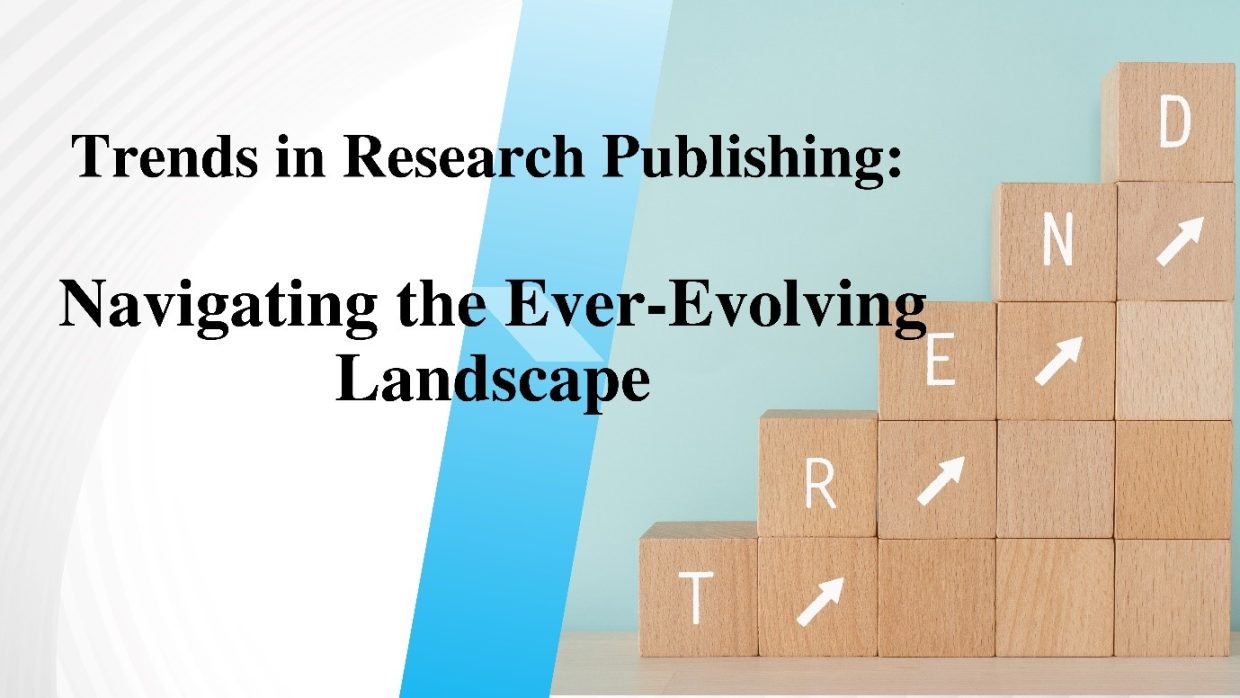Research publishing has undergone significant transformations in recent years, driven by advances in technology, changing publishing models, and shifting scholarly communication practices. Staying abreast of these trends is crucial for researchers, publishers, and anyone involved in the academic world. In this blog post, we’ll explore some of the prominent trends in research publishing and their implications for the academic community.

- Open Access Revolution
One of the most notable trends in research publishing is the continued growth of open access. Open access journals provide free and unrestricted access to research articles, increasing the dissemination of knowledge. Funding agencies and institutions are increasingly mandating open access publication, making it a dominant force in the publishing landscape. Researchers should be aware of open access options and the potential impact on their work’s accessibility and visibility.
- Preprint Servers and Rapid Dissemination
Preprint servers have gained popularity across various research fields. These platforms allow researchers to share their findings before formal peer review, facilitating rapid dissemination of knowledge. Preprints have played a crucial role during the COVID-19 pandemic, enabling scientists to share critical information quickly. Researchers should consider using preprint servers to get their work out to the community faster.
- Plan S and Open Access Policies
Plan S is an initiative aimed at making all publicly funded research open access. While it originated in Europe, its influence is being felt globally. Researchers need to be aware of the evolving open access policies and funding requirements set by their institutions and funding agencies. Compliance with these policies may affect their choice of journals and publishing strategies.
- Data Sharing and Reproducibility
Transparency and reproducibility have become focal points in research publishing. Journals are increasingly requiring authors to share their data and methodologies. Researchers should be prepared to make their data accessible and adhere to best practices for reproducibility to enhance the trustworthiness of their work.
- Altimetric and Beyond
Traditional metrics like citation counts are no longer the sole measures of research impact. Altimetric, which consider social media mentions, downloads, and other non-traditional metrics, are gaining prominence. Researchers should pay attention to altimetric to gauge the broader impact of their work beyond citations.
- Diversifying Peer Review Models
Peer review is evolving with various models emerging, such as double-blind, open, and post-publication peer review. Researchers should be aware of these models and understand their implications for the peer review process and the transparency of scholarly communication.
- Researcher Identity and ORCID
Establishing a digital researcher identity is becoming increasingly important. Initiatives like ORCID provide unique researcher identifiers, making it easier to link researchers with their work. Researchers should consider creating and maintaining their ORCID profiles to enhance their visibility and recognition in the academic community.
The landscape of research publishing is in a state of constant flux, driven by technological advancements and changing expectations. Researchers must adapt to these trends to effectively communicate their work, enhance its visibility, and navigate the evolving publishing landscape. Staying informed about open access, preprints, open science policies, data sharing, altimetric, peer review models, and researcher identifiers will empower researchers to make informed decisions about how they publish and share their research in this dynamic environment. Embracing these trends can lead to more effective dissemination of knowledge and a broader impact for your research contributions.

